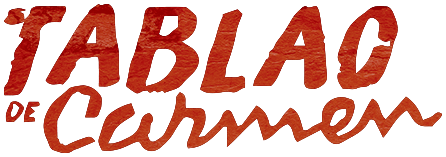Pero mira cómo beben los peces en el río,
Pero mira cómo beben por ver al Dios nacido
But look how the fish drink in the river,
But look how they drink for seeing the birth of God
Christmas is approaching and we wish to discuss one of the most jolly, familiar and emotive musical styles of flamenco: the villancico.
Spanish Villancicos
Villancicos have been around for centuries. Some scholars trace their origins to the popular chants sung in small rural villages by farmers and rural workers. Some come from as far back as the fifteenth century, others all the way from the eleventh, displaying similarities to mo0rish canticles. They were born from layman’s themes, but the true genesis of the villancico was when the style took on religious associations, and the custom of singing them at Christmas arose.
What about gypsy villancicos?
Gypsy villancicos are a distinguished from others by the flamenco influence in their compositions. That is to say, in them different flamenco song patterns known as palos such, as bulerías and tangos, are sung and applied to villancicos. These kinds of songs have become emblematic of Andalusian popular culture.
In a flamenco environment, the Christmas reunions centred around the singing of villancicos are known as zambombas.
Since 2015, one of these events in particular, “La Zambomba de Jerez y Arcos de la Frontera,” has been included as a cultural event in the catalogue of Bien de Interés Cultural by the municipal board of Andalusia.
The Topic of Villancicos
All the lyrics stem from the Andalusian Christmas repertoire. Irony is mixed with pain from the knowledge of young Jesus’ destiny. There is mention of the virgin, of strawberry trees, of food and many quotidian scenes, but above all there is there joy at the arrival of the Christ child, who is referred to in classic villancicos as “el Niño de Dios,” the child of God.
The virgin bathes, brushes her hair or cradles the baby, the child smiles, it is a night of peace and the angels make music. Curiously, the virgin is always a gypsy in these songs, while Joseph is sometimes a payo, the Spanish for gorgio or non-gypsy. For example, this villancico verse, “La Virgen gitana” by Raya Real:
“La Virgen como es gitana,
a los gitanos camela,
San José como es gachó,
se rebela, se rebela.”
«The virgin because she is a gypsy,
Wins the gypsies over,
Saint Joseph because he is a not (not a gypsy),
Resists, resists.”
The Zambomba is a party
In recent years, parties called “zambombas” have come into fashion. These parties take their name from the indispensable instrument which ensures the party will be a success. Toward the end of the month of November, all the way to the days leading up to Christmas, zambombas are celebrated in homes, clubs, patios and squares of the areas of Spain with the most flamenco and gypsy influence, particularly in Andalusia. They are also, however, held in theaters and tablaos across Spain, where these Christmas events turn into a true spectacle.
Zambomba, tambourine and anis del Mono.
These three elements are crucial for a proper gypsy Christmas celebration.
- The zambomba is a percussion instrument, a large, hollow, earthenware or wooden vessel with an opening at the top that is covered with a tensed pelt. A stick pierces this cover like a mast, and sound is obtained by running ones dampened hands up and down this stick. The sound produced by this motion is strong, hoarse and monotonous. In short, a zambomba is a fiction drum of sorts.
- The tambourine is a rustic instrument played with the fingers or the whole hand, that is round and trimmed with bells.
- The famous bottle of anis del Mono has been elevated to the ranks of musical instrument thanks to zambombas. When scraped with a spoon, the unique curvature of its glass surface produces a sound perfect for accompaniment.
Between Arcos and Jerez
Cadiz is where the purest form of this art is found. It is well known that during these dates, not only do renowned artists sing villancicos between Jerez and Arcos de la Frontera, but that it is in this territory of Andalusia that public participation maintains this tradition alive and well-rooted. All can congregate around a fire, eat pestiños, clap to the rhythm and sing, “but look how the fish drink in the river, but look how they drink for having seen the birth of God.”
Merry Christmas!
We recommend the following Youtube videos:
References Sources
Royal Spanish Academy
